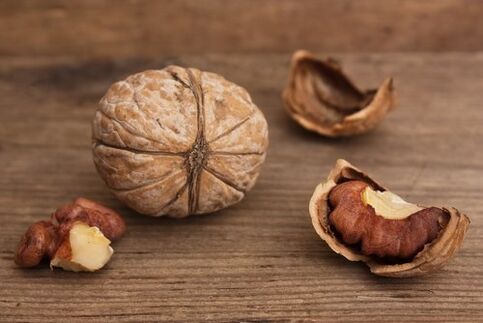Parasites are the simplest organisms that live on humans. For nutrition, they use cells, vitamins, substances, tissues, everything that is for the benefit of our health.
Also, parasites are known to poison the body by releasing harmful substances. Let us consider in more detail the symptoms of the presence of parasites in the human body, their habitat, how to get rid of them and preventive measures against their appearance.
Body parasite damage
In the first place, the working capacity of the organs is interrupted, that is, an inflammation occurs that destroys the tissues. These alien creatures often produce toxins, which over time contribute to the poisoning of the entire body.

Microorganisms that live in the intestines feed on nutrients that enter the stomach along with food. As a result, the first symptom of the presence of a parasite in the body arises - a person has a slowdown in growth, as well as a violation of mental and physical development.
Parasites have the ability to live for years and the larval eggs are highly resistant to the surrounding microflora.For example, in the digestive system, for their own defense, they release substances that inactivate the enzymes that process food during metabolism.
Subsequently, the digestion processes are interrupted. Therefore, sometimes the symptoms of the presence of parasites in the human body often resemble gastrointestinal diseases.
Common parasites
The most common human parasites are the following:
- lice: the bite of these arthropods first irritates the skin and then turns into eczema or purulent lesions;
- pinworms: small round worms with a white tinge that cause a disease such as enterobiasis;
- roundwormsare parasitic worms, whose vital activity occurs in the intestinal tract. The length of the sexually mature male individual reaches 24 cm, the female up to 40 cm;
- whipworms: ranks third in terms of frequency of the disease. Infection with this parasite causes a disease: whipworm. The female of this parasite is large, reaching 5. 5 cm, the male is somewhat smaller, 4 to 5 cm;
- Giardia: they live in two formations: vegetative and spore. In the first case, its vital activity takes place in the upper part of the small intestine, in the second - in the large intestine;
- cat trematode: affects the liver and causes opisthorchiasis;
- Trichinella- round-shaped worms. Cause helminth invasion;
- toxocara- similar to the intestinal worm, only the diameter of the larva is 0. 02 mm;
- intestinal acne- a filamentous parasite up to 2 mm long;
- nekator: Toothed worm larvae enter the body through the pores of the legs while walking barefoot. Its path begins with the right atrium and ends with the pulmonary artery. Breaking the walls of the capillaries, they enter the alveoli and from there through the respiratory tract into the pharynx.

Infection routes
You can get infected in different ways. Each of them is associated with the development cycle of a particular parasite. However, in medicine, there are 3 main sources of infection:
- Through food and water.However, contamination often occurs due to improper storage and preparation. But sometimes there is an initial infection, that is, when a product infected with parasites has undergone a bad heat treatment;
- Through the domestic contact method.In this case, the infection is transmitted from another person or pet;
- Through blood-sucking insects.This route is also known as transmission;
- Through communication with pets,who walk on the street.

There are larvae capable of independently entering the human body. A symptom of the presence of a parasite in this form is dermatobiasis disease. In this case, the larva comes into contact with the skin, bites it on its own and ends up inside the host's body.
Signs of parasites
We suggest considering 10 main characteristics:
- Constipation.Blockage of the digestive system organs can occur because the large size of the worms interferes with the normal course of peristalsis or secretions. A large number of them close the ducts (bile and intestinal), which complicates the process of intestinal evacuation.
- Diarrhea.There are living parasitic organisms that produce hormone-like substances that cause watery stools.
- Bloating, gasis another factor in the presence of worms. If you do not pay attention to periodic swelling, the symptom of the presence of parasites will appear on the human body with varying intensity and for several months and sometimes years.
- Irritable bowel syndrome.Parasites can not only irritate, but also cause inflammation. As a result, this leads to a decrease in the rate of assimilation of substances.
- Pain in muscle tissues and joints.To find the most comfortable environment, some microorganisms move in the body. Most often they choose muscles or joint fluid. Therefore, a person experiences pain and often attributes the symptom to the effects of arthritis. Also, the symptom is considered the result of an injury to the muscle tissue worms.
- Allergy.Toxins often increase the dose of eosinophil production. It is this substance that inflames tissues and causes allergies.
- Skin problems.Worms often cause rashes, eczema, and hives. Its presence also leads to skin ulcers, dermatitis, swelling, and papillomas. When the gastrointestinal tract is infected, the face is covered with early wrinkles, baldness appears, cracks are seen on the heels, and the nails become brittle.
- Anemia.As mentioned above, parasites absorb all nutrients and a large amount of them causes blood loss. As a result, the body lacks iron.
- Overweight.The symptom is associated with the defeat of the body by tapeworms, it means one thing - a protective reaction of the human body due to poisoning with products that contribute to the vital activity of parasites.
- Nervousness.Toxins produced by microorganisms irritate the central nervous system. As a result, a person develops depression, increased anxiety and nervousness.


Pay attention! Diarrhea and constipation are not only the consequences of malnutrition, but also the first symptoms of the presence of parasites in the human body.
How to identify by appearance
According to the place of their vital activity, parasites are divided into 2 types:
- Endoparasites(worms, lamblia, echinococci, etc. ) - those that live inside;
- Ectoparasites,that live outdoors (lice, fleas, bed bugs).
Ectoparasite infestation can be easily identified by its appearance. A rash appears on the body, accompanied by itching, redness and burning. Often, small wounds (penetration sites) remain at the site of your bite.

Determining the infestation of endoparasites is more difficult, because they live inside the body. These parasites have learned to adapt to their host's body during evolution. Studies have shown that it sometimes takes months, or even decades, from the time of infection to the onset of primary symptoms.
How to diagnose a disease
The diagnosis of invasion is possible due to the following symptoms:
- pale skin;
- gastrointestinal problems;
- lesion of the upper layer of the dermis;
- cosmetic problems;
- weight jumps;
- onset of chronic fatigue syndrome;
- regular headaches;
- grinding teeth during sleep;
- swelling of the extremities;
- joint and muscle pain;
- central nervous system disorder;
- itching in the perineum and anus.
Is treatment always necessary?
When infected, the human body becomes weak, allergic, and poisoned with toxins. Of course, the rapid development of these symptoms is not observed, but lack of treatment often causes serious health problems.
Pharmacy drugs
The most effective medications include the following:
- for ascariasis: piperazine and pyrantel adipate;
- for enterobiasis: mebendazole;
- of paragonimiasis, schistosomiasis, opisthorchiasis,
- for echinococci: mebendazole;
- from bovine tapeworm: praziquantel.
Folk Home Remedies
In addition to garlic and white pumpkin seeds, as the three most useful products to resist parasite infestation, nature has created 3 plants that can cleanse the human body when the first symptoms of parasite infestation appear: cloves, walnuts and wormwood.
Cleaning the body of enterobionts with walnuts.Pour 0. 5 liters of vodka on the green crust of 15 walnuts and place in a dark place for a month. Take within 5 days after dissolving one drop of tincture in 0. 1 l of water. After that, increase the dose to 2 -2. 5 tsp. and take 2 times a day for a whole year.

Purification with the medicinal plant absinthe.Grind the seeds of dried plants. The reception should start with a pinch. By the 15th day of admission, the dose should reach 1. 5 hours, after that, take 0. 5 teaspoons a day. Finally, use the same dose only once a week.
Cleanse the body with clove seeds.Crush the seeds to a powdery state. You should start with 1. 5 teaspoons, gradually reducing the dose to one tablespoon. The admission course is 10 days.
Infection prevention
Once the parasite enters our body, it goes through 3 environments:
- Alkaline (oral cavity);
- Sour (stomach);
- Alkaline (bile).
If everything is in order with each barrier, then you will not be afraid of a single parasite. Even if it is already in the body, it will be excreted naturally. But when at least one barrier is violated, it indicates a violation of the entire system.
First,to prevent infections, it is necessary to regularly observe hand and whole body hygiene, clean the oral cavity: cure diseased teeth, bleeding gums, stomatitis, get rid ofan unpleasant smell.

Second, establish a drinking regimenand follow a proper diet.
Third, eliminate bile stagnation.
And of course, for the prevention of parasitic diseases, do not forget about the general rules of hygiene.






































